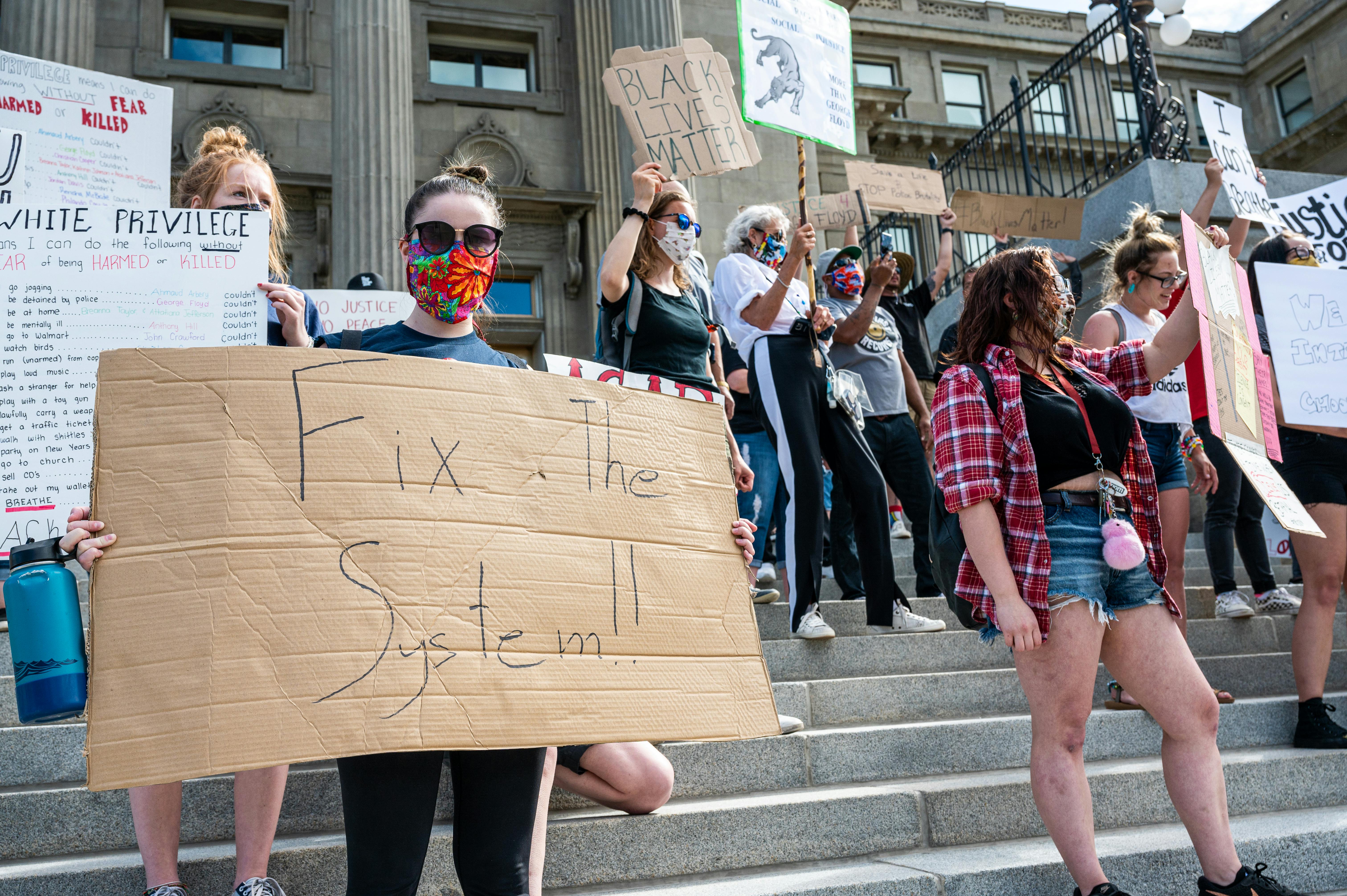The holy Roman Catholic church, at the time of Martin Luther and John Calvin, had been in power for a thousand years and owned a third of the land in Europe. The Pope, cardinals, and bishops were drawn exclusively from Europe’s aristocratic elite. Because of this, the clergy already wielded an incredible amount of wealth and influence. As heads of the church, they were virtually unenforceable. Should an outside power raise a problem, the church could often summon forces from various kingdoms in Europe, through the influence caused by a direct link of the pope and his family to the government in question, or by threatening to excommunicate and condemn his King. Against threats of domestic trouble, offenders were branded as heretics, witches, or other undesirables and were quickly, or slowly and terribly, dealt with by the various branches of the inquisition. Even after the breaking of the churches’ monopoly on knowledge at this time, they still had complete control over salvation.
The church knew how to squeeze every last drop of wealth it could out of this monopoly. Between church donations, heavy papal taxes, and indulgences, the church was draining its followers and everyone else it could. The church hierarchy was stagnant with corruption. The list of malcontents was long, but until the reform no one was fit for the task of opposing the church, but now the situation was correct.
Martin Luther was going to be a lawyer, but during a severe thunderstorm he swore an oath to become a monk if he was saved. He became a monk and eventually a professor of theology at the suggestion of a priest. During this time he came to the revelation and belief that salvation was based on faith alone, rather than faith and an endless series of good works. He saw the complete observance of God’s commandments and laws as impossible, and the numerous rituals and works as inadequate to achieve salvation. Only God in his infinite glory and mercy could give salvation to those who did not deserve it, which was everyone. Many historians consider that the reformation began in 1517 when Martin Luther published ninety-five theses objecting to indulgences, beginning his separation from Rome.
For hundreds of years, the church had been rewarding followers with indulgences, which were treated as good works and additional works, which could be reassigned to sinners. Originally, indulgences were granted to those who went on the crusades, but with the continued degradation of the church, they were now given in exchange for monetary donations. Indulgences were used to reduce the amount of time spent in purgatory, which was the place where one spent time paying for one’s sins before going to heaven. You could spend thousands of years in fiery pits of torture before you are allowed to ascend. The church eventually sank to the level of selling indulgences, which would bring dead relatives out of purgatory.
Throughout the entirety of this practice there were monks, priests, and others who opposed it, but there were some key differences that made Luther a success. He had written his thesis in the scholastic language of Latin, as it was written for his colleagues, but it was taken and translated into the local German, and then printed and distributed to the public. So unlike most who came before him, his word was heard by many and spread.
Normally Luther would have been quickly dealt with by the church, and even his direct attacks on the Pope may have been little, but we cannot forget the disgruntled nobility, the Germans in particular. Pope Leo X had sent a bull to Luther ordering him to recant, which Luther threw into a bonfire, along with all the church laws, in front of a crowd. Now the church saw him as a heretic, if it hadn’t seen him that way before. His lay overlord, Frederick the Wise of Saxony, was German and therefore had an underlying bitterness towards the church, so he decided not to burn Luther as a heretic because he did not get a fair hearing. Luther was then summoned to the city of Worms to stand trial by a council of the princes of the Holy Roman Empire. The head of this council was the emperor of the empire Carlos V himself, who was not German. Luther was officially labeled a heretic, but not before Frederick took him to the safety of the Wartburg.
From the Wartburg, Luther continued his works. Because Luther believed in salvation by faith alone, he denounced the entire church hierarchy as no more holy or virtuous than other followers. The particular bitterness of the German aristocracy was mainly due to the lack of agreements between the pope and the emperor that limited the power of the church in Germany. From this, papal taxes were exorbitantly high. Unsurprisingly, Lutheranism first took hold in the German aristocracy. Germany was at the heart of the Holy Roman Empire, and now largely rejected the Catholic Church.
Kings and lords began converting to Protestantism, whether for spiritual or other reasons, it had a profound impact on the church in their lands. Without the pope or the regional clergy office to assign and control the churches in an area, the prince or the ruling government would do so, maintaining more of his own power over his land. Also monasteries, convents, and other ecclesiastical organizations were dissolved by the state, and their wealth was generally seized at that time.
With Luther’s success, many others found the audacity to challenge the church(,) and its practices more openly. Out of this grew variations of Protestantism, as Lutheranism became known, and its derivatives, such as Zwinglianism which was founded by Ulrich Zwingli, who had opposed the church since before Luther’s time, but had not spoken out until after Luther’s time. Luther’s reformation had begun. Another contemporary was the Anabaptist faith, an extreme form of Protestantism that believed in adult baptisms and a communal, communist way of life and government. Calvinism also came as I will mention soon.
Zwinglianism was the most moderate of the Protestant sects. Zwinglianism was accepted and embraced by Zurich and northern Switzerland, but it only lasted for about ten years when Ulrich Zwingli was killed in battle against Catholic forces, and most of his followers were absorbed into Calvinism. A determining factor in the short life of Zwinglianism was the difference in beliefs between Zwingli and Luther, as Luther believed in the real presence of the body of Christ in the sacrament, while Zwingly only saw it as a symbolic reminder of Christ. This difference maintained a split between Zwinglians and Lutherans that left the Zwinglians to fend off the Catholics, single-handedly. Fleeting as it was, this movement helped break the Catholic monopoly and served as a way of sinking Calvinism.
The Anabaptists were the extremist branch of Protestantism. They believed in adult baptisms, that believers needed to understand the meaning of baptism for it to be a true baptism. Similar to Lutheranism, Anabaptism disagreed with the Catholic church hierarchy. They saw the ‘true’ church as a small community of believers who were not simply members at birth, but had to join intentionally. In 1534 a group of Anabaptists took control of the German city of Munster. They tried to turn it into a new religious center, their leader calling himself David’s successor and king of the new temple. A year after taking control, Catholic forces took the city. Anabaptists, in the city and elsewhere, were tortured, prosecuted, and scattered beyond cohesion.
The next aspect of the expansion and social impact of Protestantism has a lot to do with Calvinism, so let’s introduce this sect. Like Luther, John Calvin was going to be a lawyer but turned to religion. Calvin believed in the total omnipotence of God, and that it was the destiny of every sinful human being, of which all of them, to be condemned to hell for eternity, or to be saved by God. Naturally, the Calvinists were the only ones predestined to be saved, and everyone else was damned no matter what. The signs of being saved were being a Calvinist, as mentioned above, following the laws of the Bible, and being successful. The upper class outside of Germany was content to remain within Catholicism as they had money to buy indulgences and lacked the bitterness of the German aristocracy.
Usually the only way to make a substantial advance toward salvation under Catholicism for the middle class was to fight in crusades, which were not as common at the time as they were at the founding of indulgences. Calvinism thus became the religion of the middle class. Catholicism had put a limit of 15% of earnings and a prohibition on lending money, which Calvinism did not. This helped pave the way for more mercantile trade and banking. Calvinists believed in hard work and were against drinking, dancing, prostitution, and any temptation. (Synonym: FUN). Naturally, a new drink appeared during this time, coffee. This was the drink of the middle class, ironically. Calvinists were industrious and strove to succeed, as the saved must succeed.
The lower class were in the same position they had been for a thousand years or more. They were screwed. At the beginning of the rise of Lutheranism, the lower class saw Luther as a hero who challenged the church. They too wanted to throw off the yoke of their lords as Luther seemed to be doing with the Pope and the Emperor himself. When they approached Luther, he denied them, saying that they should follow his lords. Then they revolted and more than 100,000 people died. If their master was a Protestant, so were they. If their master was Catholic, so were they. The same was of the nations. If a king was Catholic, he was a Catholic nation, and the present churches would reflect that. Due to the reforms of Luther, Calvin, and the English Catholic reforms, religion became a partly secular practice.
The new religious practices present in Europe had a dramatic impact on the daily life of all peoples, regardless of their class. These included spiritual and other changes.


